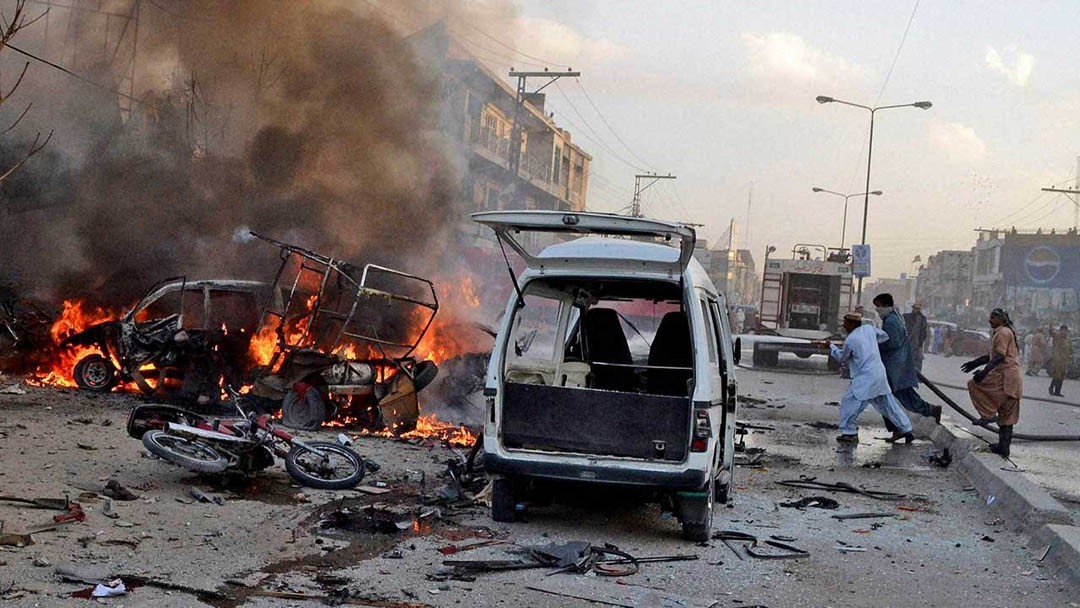
Understanding the major sources of violence in Balochistan

Sorrow, grief and horror descended upon Quetta as the city witnessed yet another tragic day on August 8. This time, sparing the Hazara community, tens of lawyers became the victim of a suicide attack, which was carried out at a time when lawyers had gathered in the emergency ward of Quetta hospital to mourn the death of president Balochistan Bar Council, Bilal Anwar Kasi. Kasi was killed earlier in the day in an episode of target killing.
Of the 22 deadliest episodes of mass killings in Pakistan, four have taken place in Quetta city. Except for the latest suicide attack executed by the Taliban, the rest of the three were exclusively sectarian in nature, killing the Hazara people en masse.
After an orgy of violence in and around Quetta in a quick succession, there is a bitter sense of resentment among the Pashtun intelligentsia of the city. For them, the alleged murder of Jaffarabad DPO Jahanzaib Kakar, target killing of Amanullah Achkazai, Principal Law College Quetta, and the mowing down of a generation of able, well-known and high profile lawyers of Quetta city have a common thread running through these fatal occurrences: they all point towards a systematic campaign to deprive the ethnic community of its people of high caliber. Whether one agrees with the perception or not, the fact that perception matters and matters deeply is well established no matter how unwarranted a perception may be. The question that we should ask against the backdrop of recent bloodletting in Quetta is this: what are the sources of terror in Balochistan, especially Quetta city?
There are two major sources of political violence in Balochistan. Baloch separatism, led by a number of militant groups, is one such source of violence. Sparing the Pashtun and Hazaras from their violence, the insurgents, in the past, targeted settlers mainly from Punjab and the state apparatus. Generally, the BLA, BRA and BLUF and other secessionist groups did not kill civilians. State installations, police and the Frontier Corps personnel have principally borne the brunt of separatist violence.
Fighting for what they call as independent Balochistan, Baloch militants use target killings, impoverished explosive devices and bomb blasts as their means to achieve the end. It would be premature to declare that the separatists have completely been defeated though insurgency has been petering out for the last couple of years thanks to the state’s avowed resolve of bringing the separatists back to the state’s fold by a mix of cooption and coercion.
Read also: Quetta bleeds again
The second and the deadliest source of violence is the one spearheaded by the Taliban. Within the context of Balochistan, especially Quetta city, for a long time Taliban were synonymous with outlawed sectarian outfits such as Lashkar-e-Jhangavi (LeJ) and Ahle Sunnat Wal Jummat (ASWJ), previously known as Sipah-e-Sahaba Pakistan (SSP). Since 1999, the Taliban have killed some 1500 members of the Hazara community on sectarian ground in a string of suicide attacks and bomb blasts, which targeted innocent Hazara men, women and children in an apparent attempt to establish what they call as the so-called Sunni state.
Within the Taliban, there is another category -- Islamist-cum-sectarian. A post-9/11 phenomenon, this category of Taliban aims at bringing about a Shariah government run according to their retrogressive version of Sunni Islam of the Wahabi-Deobandi combine. The latest carnage on legal fraternity was the handiwork of this category of Taliban.
The August 8 bloodshed in Quetta added a new dimension of violence in the restive province of Balochistan. It apparently heralded the entrance of the Islamic State, the deadliest of all non-state actors that the Muslim world has ever given birth and known to. Both the IS and Jamaat-ul-Ahrar, the TTP’s breakaway faction, took credit for the suicide attack with the latter vowing to unleash more attacks until Islamic Shariah is enforced in the country. The involvement of the Islamic State is not unlikely given the fact that what is all required on the part of jihadists is to switch their allegiance from one organisation to the other.
In Quetta, politically conscious commentators and activists took strong exception to foreign involvement in the carnage. They believe that the homegrown religious militants are the byproduct of Islamabad’s policy of using the non-state actors in the furthering of its foreign policy’s goals. Nonetheless, what both the state functionaries and local commentators remain unmindful of is this: religious militants are mercenaries who will render their services to anyone who hires their services and promises shelter. No less important is the fact that being critical of our regional policies is better; and remaining oblivious to regional states’ involvement inside Pakistan is even worse.
Flushed out of FATA after the launch of Zarb-e-Azb ever since June 2015, the TTP and its splinter groups such as Jamaat-ul-Ahrar are operating from their bases in eastern Afghanistan.
When it comes to assessing the Taliban threat, it is the gravest of all threats that Balochistan is facing. Sometime ago, I asked a senior security officer in Quetta if the good-bad Taliban dichotomy still existed. "No good Taliban are out there," he rightly said. "Tackling threats one by one is our strategy as we cannot eliminate all threats in one go," he sounded pragmatist.
For sure, since the launch of Zarb-e-Azb, state has made huge gains against the non-state actors across the width and breadth of Pakistan. Still much needs to be done. Improving intelligence and reducing the visible state apparatus -- police, levies and the FC -- and executing targeted operations against Taliban of all ilk is the way forward.
Without establishing friendly relations with Afghanistan, peace will remain an illusion in the two countries. And this cannot happen until the delusional division of good and bad Taliban is laid to rest!